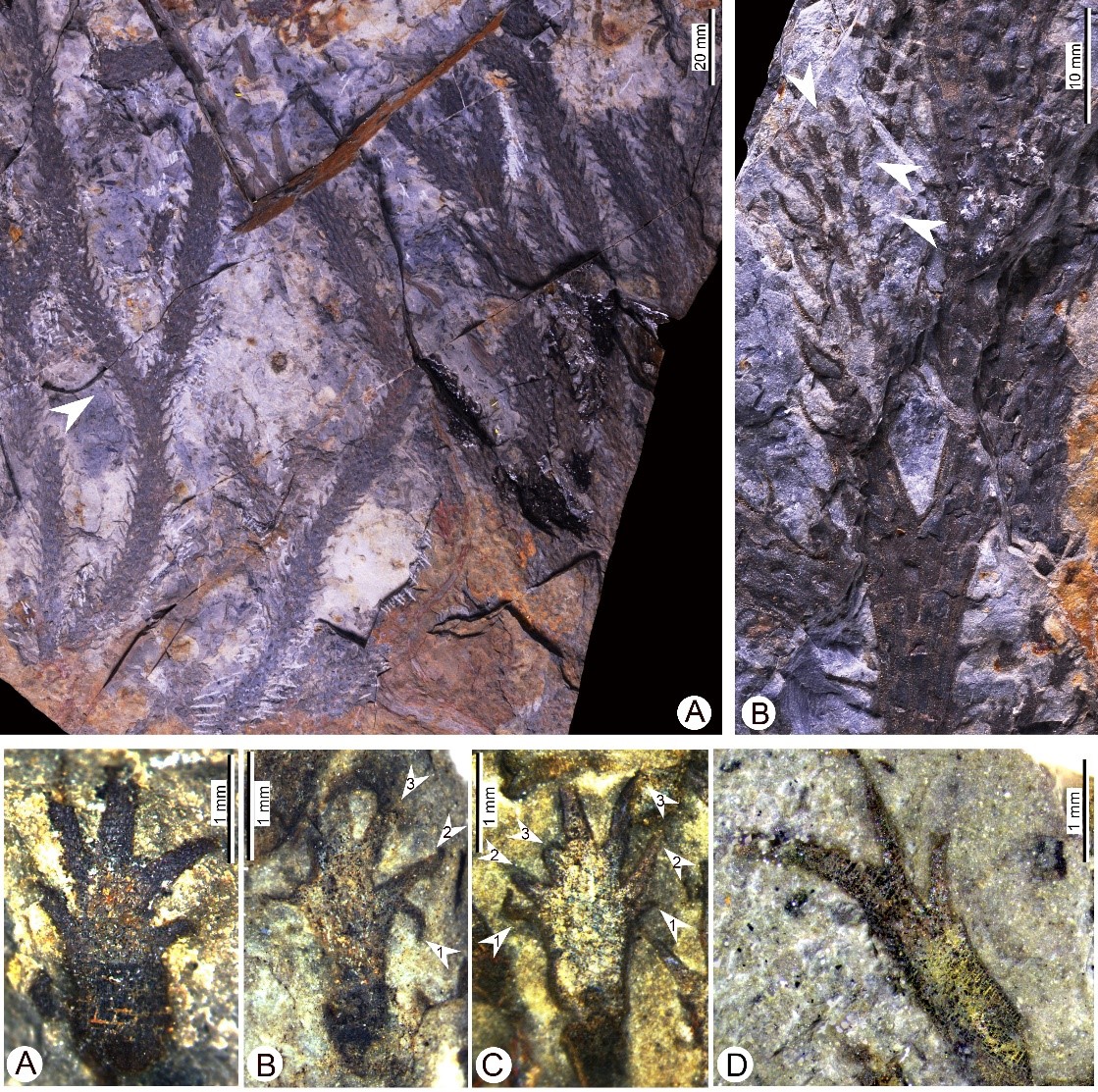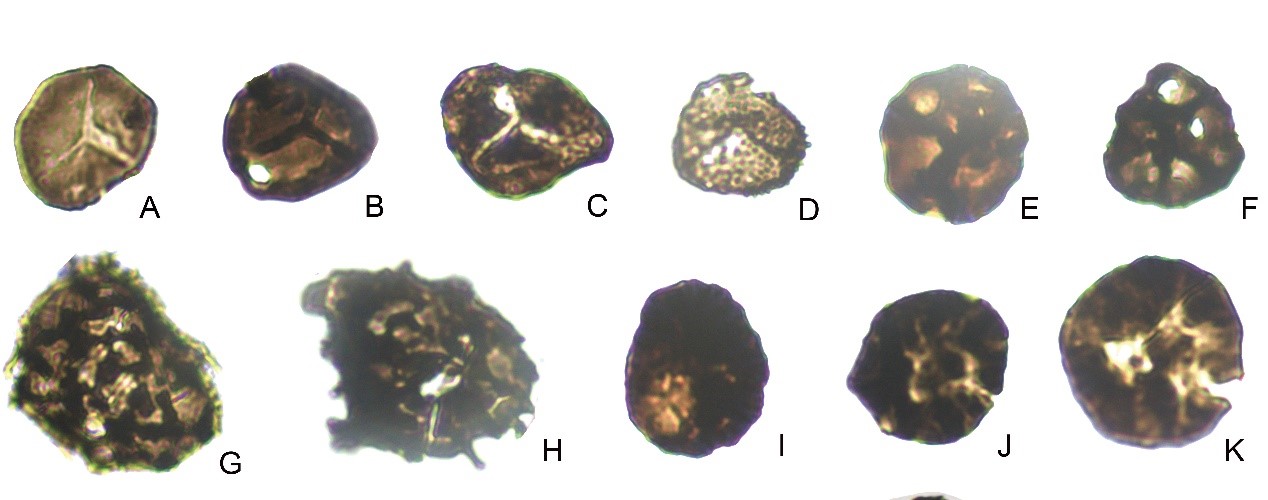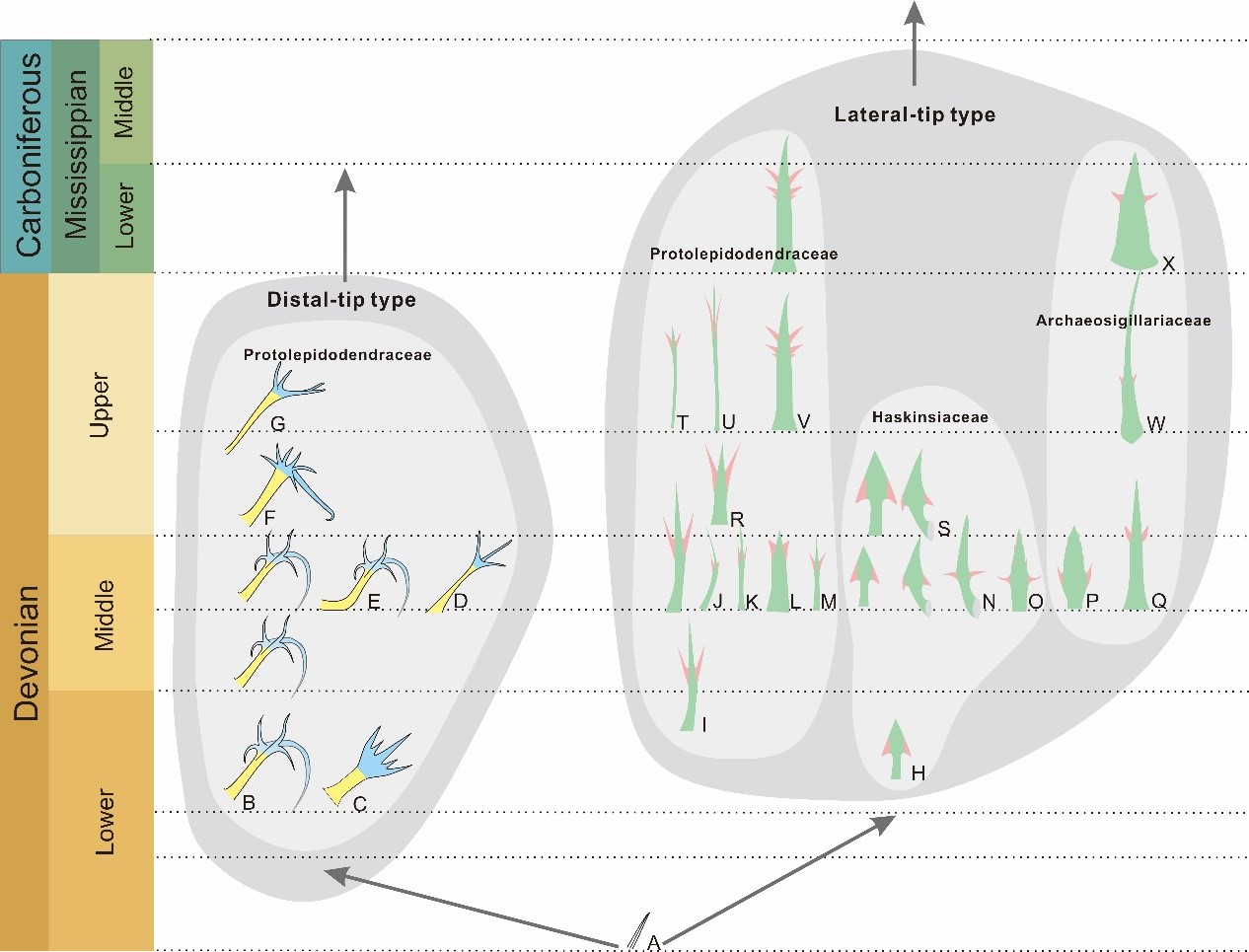Protolepidodendralean represents a group of herbaceous lycopsids and were widely spread during the Devonian Period. Its study plays a key role in lycopsid evolution, early terrestrial paleoecoloty, and paleophytogeography.
Abundant Middle Devonian herbaceous lycopsids were recognized from the Middle Devonian of the western Junggar Basin, especially the Hujiersite flora. However, knowledge on Late Devonian herbaceous lycopsids from the same working area is relatively less, hindering understanding to phytogeography and further comparison.
Recently, the Early Land Plant working group of Nanjing Institute of Geology and Palaeontology, Chinese Academy of Sciences (NIGPAS), led by Prof. XU Honghe, conducted a systematic palaeontological study based on plant fossils from the Upper Devonian of western Junggar Basin, Xinjiang. In this study, the herbaceous lycopsid Frenguellia eximia (Protolepidodendrales) is firstly discovered and its generic and specific diagnoses are emended based on newly-collected plant fossils. The related research results were published in the Journal of Palaeogeography.
“The new occurrence of Frenguellia eximia further shows paleophytogeographical similarities between western Junggar and northwestern Gondwana”, says XU.
Frenguellia eximia consists of planate leaf with three upward pairs of lateral tips, isomorphic sporophyll to the leaf, and elongated, oval sporangium. Furthermore, this research analyzes leaf morphology of all members of the Order Protolepidodendrales and recognizes two leaf types of the lateral-tip and the distal-tip leaves. Lateral-tip type leaf consists of an obvious main body and several paired lateral tips, whereas distal-tip type leaf shows a petiole and a distal lamina with several planate or three-dimensional segments. Two leaf types probably indicate two independent evolutionary routes of microphylls evolving from simple leaf of pre-lycopsids during the Devonian Period.
This study is one of series results contributed to the Palaeotonology Working Group of the Deep-time Digital Earth Big Science Program.
Reference: Liu, B.-C., Wang, K., Zong, R.-W., Bai, J., Yang, N., Wang, Y., Xu, H.-H*., Frenguellia (Lycopsida) from the uppermost Devonian of West Junggar, Xinjiang Uygur Autonomous Region, NW China, and its implications on protolepidodendralean leaf morphology and paleophytogeography, Journal of Palaeogeography, https://doi.org/10.1016/j.jop.2023.03.004.

Fig.1 Frenguellia eximia from the Upper Devonian Hongguleleng Formation, western Junggar Basin, Xinjiang.

Fig.2 Spores from the Frenguellia eximia bearing bed.

Fig.3 Diagrams showing geologic ranges of of distal-tip leaves (on the left), each with a leaf petiole (yellow portion) and distal lamina (blue portion), and lateral-tip leaves (on the right), each with an obvious main body (green portion) and several paired lateral tips (pink portion).
Contact:
LIU Yun, Propagandist
Email: yunliu@nigpas.ac.cn
Nanjing Institute of Geology and Palaeontology, Chinese Academy of Sciences
Nanjing, Jiangsu 210008, China
Download:
